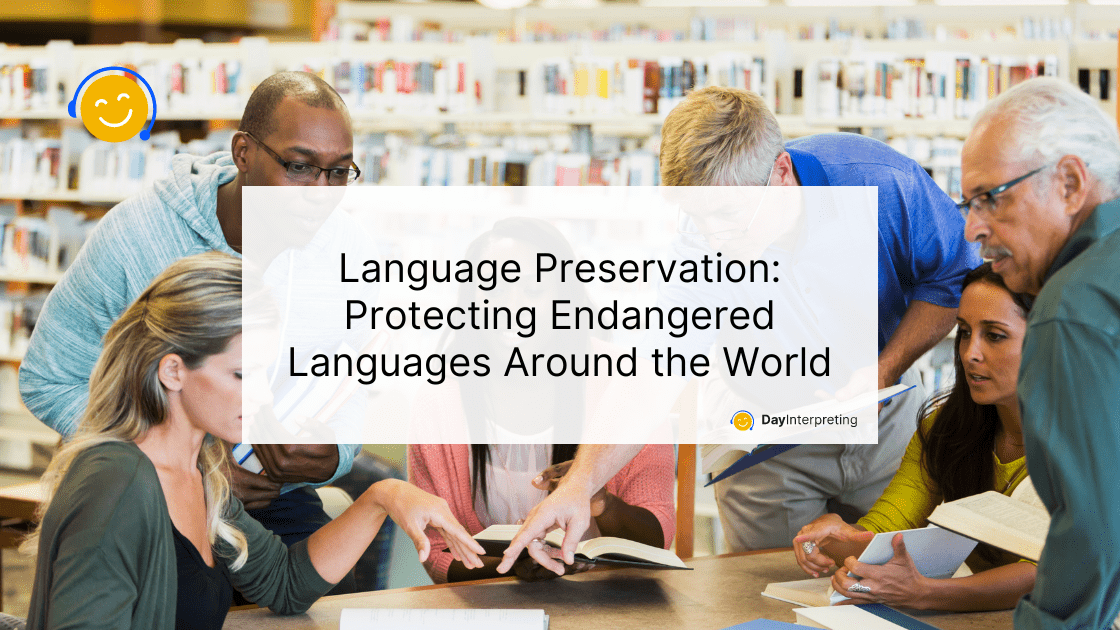Language is more than just a way to communicate. It’s a key part of our cultural identity, history, and way of life. Unfortunately, many languages around the world are endangered, with some even on the brink of extinction. Let’s explore why language preservation is so important and what can be done to protect the abundance of languages that face endangerment around the world!
What Are Endangered Languages?
Endangered languages are those at risk of falling out of use. When the last person who speaks a language dies, the language dies with them. According to UNESCO, there are over 6,000 languages spoken worldwide, and nearly half are endangered. This means that without efforts to preserve them, we could lose half of our linguistic diversity in the coming decades.
Why Do Languages Become Endangered?
There are several reasons why languages become endangered:
- Globalization: As the world becomes more connected, dominant languages like English, Spanish, and Chinese spread, often at the expense of smaller languages.
- Urbanization: People move from rural areas to cities where dominant languages are spoken, leading to a decline in the use of their native languages.
- Education Systems: In many places, education is provided only in dominant languages, causing children to learn these instead of their native tongues.
- Media and Technology: Television, movies, and the internet mostly use dominant languages, making it harder for smaller languages to thrive.
The Importance of Language Preservation
Preserving languages is crucial for several reasons:
Cultural Heritage
Languages are a key part of our cultural heritage. They carry unique traditions, stories, and knowledge passed down through generations. When a language dies, we lose a part of our cultural history.
Scientific Knowledge
Languages can offer valuable insights into the natural world. Many indigenous languages, for instance, include detailed knowledge about local ecosystems, plants, and animals. Losing these languages means losing important scientific knowledge.
Human Rights
Language preservation is also a matter of human rights. Every community has the right to speak its own language and preserve its cultural identity. Promoting linguistic diversity helps ensure that all voices are heard and respected.
Efforts of Language Preservation
There are many ways to help protect and revitalize endangered languages. Here are some effective strategies:
Language Documentation
One of the first steps in preserving a language is documenting it. This involves recording native speakers, writing down the grammar and vocabulary, and creating dictionaries. Documentation ensures that even if a language stops being spoken, there will be records for future generations to learn from.
Education and Revitalization Programs
Education is key to language preservation. Schools and community programs can teach children endangered languages, ensuring they are passed down. Bilingual education, where children learn in both their native language and a dominant language, is particularly effective.
Technology and Media
Technology can be a powerful tool for language preservation. Apps, websites, and social media platforms can help teach and promote endangered languages. For example, Duolingo now offers courses in several endangered languages, making it easier for people to learn and practice them.
Community Involvement
Communities play a crucial role in language preservation. Local initiatives, such as language classes, cultural events, and storytelling sessions, can help keep a language alive. It’s important for community members to take pride in their language and actively use it in daily life.
Success Stories in Language Preservation
Several languages have seen successful revitalization efforts. Here are a few inspiring examples:
Hawaiian
Hawaiian was once an endangered language, but thanks to dedicated efforts, it’s making a comeback. Immersion schools where children are taught entirely in Hawaiian have helped revive the language. Today, Hawaiian is taught in schools and spoken by a growing number of people in Hawaii.
Maori
In New Zealand, the Maori language faced decline but has seen a resurgence due to strong community and government support. Maori is now an official language of New Zealand, and there are numerous educational programs, media outlets, and cultural events promoting its use.
Welsh
Welsh, spoken in Wales, has also experienced revitalization. The Welsh government has implemented policies to promote the language, including bilingual education and media. Today, Welsh is used in schools, public services, and everyday life by a significant portion of the population.
How You Can Help with Language Preservation
You don’t need to be a linguist to help preserve endangered languages. Here are some simple ways you can make a difference:
- Learn and Use: Take an interest in learning an endangered language. Use it in conversations, social media, and other areas of your life.
- Support Initiatives: Donate to organizations working to preserve languages. Your support can fund education programs, documentation projects, and more.
- Raise Awareness: Spread the word about the importance of language preservation. Educate others and encourage them to get involved.
Final Thoughts on Language Preservation
Language preservation is vital for maintaining our cultural diversity, scientific knowledge, and human rights. By documenting languages, supporting education and revitalization programs, and using technology and community initiatives, we can help protect endangered languages around the world. Every effort counts in ensuring these languages continue to thrive for future generations.





0 Comments